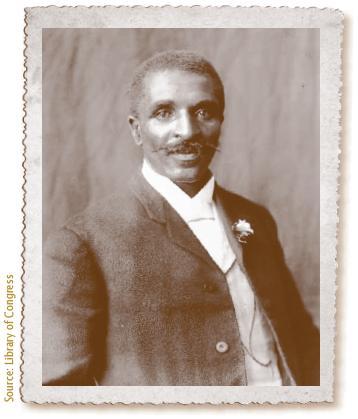America I AM Pass It Down Cookbook (27 page)

Stir in 1½ cups of the milk and add Colby cheese, mixing so it’s evenly distributed. Stir in the Velveeta cheese and fold so it’s evenly distributed. Next, add the cheddar cheese and stir well so it’s evenly distributed.
Pour the remaining 1½ cups of milk over the macaroni mixture. Do not stir. Place in the oven and cook, uncovered, for 30 minutes or until the mixture begins to bubble.
Stir macaroni carefully, blending the milk with the cheese so all ingredients are evenly distributed. Bake 30–35 minutes more or until bubbly and lightly browned.
Denise Pines’ Spaghetti Creole
Los Angeles, California
SERVES 6 TO 8

Denise Pines is a marketing executive and competitive runner who often takes ribbing from her family and friends about her “lack” of cooking skills. The truth is, Ms. Pines’ cooking skills are a well-kept secret. “I used to cook all the time with my mother until I became so good at it that it became my job to start dinner and then, eventually, cook the whole meal,” she says. “I realized soon enough that if I did a poor job of it, I’d be released from my duty.”
Since those school days, Ms. Pines hasn’t ventured much into the kitchen, except to bake, a hobby she loves. There is one recipe, though, that has remained in her repertoire—to the delight of family and friends. “I learned this dish from my mom and have cooked it throughout my life. It’s a go-to dish that people always seem to love.”
3 to 4 small chicken sausages (microwave on high for 3½ minutes)
1 pound ground turkey
½ pound ground chicken
1 tablespoon mixed Italian herb seasoning
1 small white onion, chopped
3 stalks celery, chopped
½ green bell pepper, chopped
2 garlic cloves, chopped
1 pound medium shrimp, peeled and deveined
7 jumbo shrimp, peeled and deveined
2 cups mushroom marinara sauce
salt and pepper to taste
1 package spaghetti
Microwave the chicken sausages for 3 minutes.
Heat olive oil in a large fry pan on medium heat. Add ground turkey and chicken, then add Italian herb seasonings. Fry 1–2 minutes.
While meats are still red, add onion, celery, bell pepper, and garlic. Fry 2–3 minutes or until the onion is softened.
Cut up cooked sausages and add them and shrimp to the pan. Mix well and cook until the shrimp just turns pink.
Using a slotted spoon, remove the meat mixture and place it in a clean, dry fry pan with the mushroom marinara sauce and ¼ cup of water. Simmer 10–15 minutes.
While the sauce is simmering, cook spaghetti according to package instructions and drain.
Place cooked spaghetti in a large platter, pour the meat and shrimp sauce over it, and serve.
Grandpa Peppermint’s Speckled Butter Beans
Houston, Texas
SERVES 6 TO 8
“Growing up in Beaumont, Texas, in a large family of eight, my father always had a garden,” writes LaLa Lewis. “In the summers he would grow butter beans, tomatoes, okra, onions, greens, and green beans. My favorite time was helping pick the butter beans and the whole family shelling them so that our mother could make a large pot of butter beans served with cornbread. As we grew older and moved away and had our own children, my father became known as Grandpa Peppermint, since he always had peppermints in his pocket, and my mother was Grandma Jelly Bean, since she always had jelly beans. My father continued with his garden until he passed away in 2003, but my mother, who is 88, taught me how to make my favorite Grandpa Peppermint’s Speckled Butter Beans.”
1 pound speckled butter beans
3 cups water
3 bacon slices, cut into small pieces
1 small onion, chopped
6 pieces of okra, cut into small slices
3 tomatoes, cut into pieces
2 teaspoons Creole seasoning (
page 233
)
1 tablespoon honey
Pass It Down TIP
Dried beans should always be soaked at a ratio of 3:1. One cup of dried beans should be soaked in 3 cups of cold water.
Shell butter beans and rinse well. Soak beans in water, 3:1 water to beans ratio.
While butter beans are soaking, heat a large cast iron pot and add the bacon pieces. When the bacon fat starts to render, add onion and okra. Fry until okra is slightly brown.
Add chopped tomatoes and Creole seasoning. Add 3 cups water and bring to a boil.
Drain the butter beans that have been soaking and place in boiling water.
Gently stir until water returns to a boil. Stir in tablespoon of honey, reduce the heat, cover and simmer 40–50 minutes until tender.

Pass It Down trick:
If you can’t soak beans overnight to soften them, the next best thing is to bring them to a boil, simmer for 25 minutes, cover the lid and allow to soak for 1 hour. Then use as directed.

The Peanut Doctor
George Washington Carver’s Contributions to American Food

T
he Missouri-born child of a slave girl,
George Washington Carver was destined to be different. When he was just one week old, he was kidnapped along with his mother and sister from their little home on the Diamond Grove, Missouri plantation of slaveowner Moses Carver. Only George was recovered by his master, trading a racehorse as ransom.
When slavery ended a year later, Moses Carver, a German immigrant, raised young George as one of his own children, teaching him to read and write, and pushing him toward a life of study, even though it meant relocating to a town ten miles away while still a little boy to attend a black school.
He moved to Kansas to attend high school and later college—which rejected him after admittance when, upon arrival, they saw he was an African American. But George persevered, working as a tenant farmer until he saved enough money to go to college in Indiana. In later years, his work on the farm growing subsistence crops would influence his work as a plant pathologist and mycologist. He specialized in crops that were easy to grow in poor soil, providing a living for the poorest of farmers, most of them African American.
George Washington Carver was touted as a new Renaissance man (he was called the “Black Leonardo” by
Time
magazine in 1941) because he was accomplished in music and art as well as science. But it was his scientific accomplishments that made him famous. He was interested not simply in crop research but how plants could provide relief from diseases like polio. He is most known for his work with peanuts at his laboratory at Tuskegee Institute in Alabama, where he created peanut products in the modern forms we know and use today, including peanut oil and peanut butter.
We think the following recipes from his 1916 work,
How to Grow the Peanut and 105 Ways of Preparing it for Human Consumption
, are a delicious testimony to Dr. Carver’s talent and skill. They have been adapted slightly for use in the modern kitchen.
Peanut Salad Number Two
SERVES 4
The humble peanut becomes elevated in this simple salad that combines the legume with buttery Bibb lettuce, apples, and an easy Hollandaise-like sauce.
1 cup roasted peanuts, chopped roughly
1 large Granny Smith apple, peeled and sliced
½ cup water
½ cup sugar
2 tablespoons butter
½ cup vinegar
1 tablespoon flour
1 egg
1 head Boston Bibb lettuce, cleaned and trimmed
Mix the peanuts and apples together in a medium bowl. Set aside.
In a medium pot, whip together the water, sugar, butter, vinegar, flour, and egg. Place over medium-low heat, whisking constantly until the mixture thickens, about 3 to 4 minutes. Remove from heat and allow to cool to room temperature.
Layer a platter with the Boston Bibb lettuce leaves and sprinkle evenly with the peanut-apple mixture. Pour the dressing over the top of the salad. Serve immediately.

Did You Know?
Peanuts are not actually nuts at all. They are a legume—or a member of the bean family.

Aunt Nellie’s Peanut Brown Bread